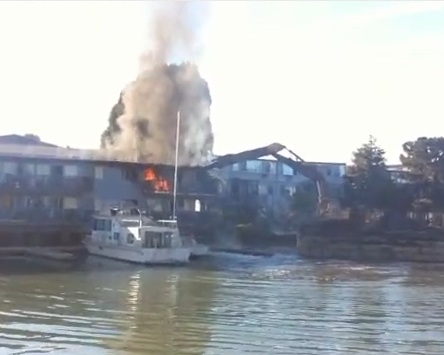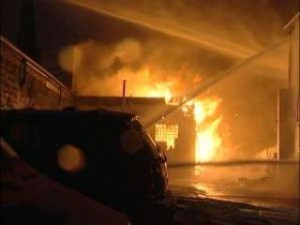Is NTSB right on this one? Should subway operators be making own PPV decisions in tunnel fires?
Read entire NTSB urgent Safety Recommendation
Why did Metro wait 7 minutes to call for firefighters? Congress has a chance to find out on Friday
Yesterday (Thursday), the National Transportation Safety Board (NTSB) came out with an urgent Safety Recommendation in the event of a fire or smoke in a subway tunnel. NTSB determined that DC’s WMATA made poor choices in using ventilation fans in a Metro Yellow line tunnel incident on January 12 that left one woman dead and more than 80 people injured.
NTSB reports that Metro used a station fan in the exhaust mode that took smoke from an arcing third rail and brought it toward the stalled train. This seems to be an important finding about the incident and I am sure most people in the fire service would agree this ventilation technique was not a good move on the part of Metro’s Operations Control Center (OCC). NTSB also pointed out that Metro failed to push fresh air into the tunnel to alleviate smoke conditions.
NTSB also offers an example of a proper (best practice) procedure in its Safety Recommendation that has me wondering what the fire service thinks, particularly those in the Washington area responsible for Metro.
Essentially NTSB points out that Metro does not have an SOP for using those fans during a fire or smoke condition and told Metro and others they need to have one. Here’s the language from the NTSB document:
The OCC rail controllers are guided by various emergency Standard Operating Procedures (SOP). WMATA SOP No. 6, Smoke and Fire on The Roadway, contains a number of key actions that must be taken when a train encounters smoke in a tunnel. This SOP does not address tunnel ventilation strategies. Other transit agencies (such as, the San Francisco Bay Area Transit District) have developed detailed ventilation procedures for addressing train fires and smoke events in tunnels. A common approach in these tunnel ventilation procedures is: (1) to identify the most likely location of the smoke or fire, (2) to start the ventilation fans on one side of the smoke or fire in supply mode, and (3) to start the ventilation fans on the other side in exhaust mode. This strategy is designed to move smoke away from the passengers and the evacuation route. Once implemented, the controllers are to check with personnel at the site to verify the ventilation fans are properly working and to make any necessary adjustments.
WMATA told the NTSB investigators that the OCC controllers were trained on ventilation procedures and on the strategy of using ventilation fans in supply and exhaust modes to provide air to passengers. WMATA also told the NTSB investigators that since this accident it has re-trained its controllers on the proper operation of tunnel ventilation fans. However, during the investigation, the NTSB investigators determined: (1) WMATA does not have a written ventilation procedure for smoke and fire events in a tunnel, and (2) the ventilation strategy implemented during this accident was not consistent with best practices. This issue is critical because SOPs, which are readily available to the controllers, can serve as a checklist during an emergency.
Is this an SOP you would want Metro or any subway system to implement before the arrival of the fire department? In other words, does it make sense to have non-firefighters making decisions to add fuel to a fire ?
If this were a significant fire involving trash or a burning train car in between two subway stops would this procedure really be the right thing to do?
I am far from an expert in these matters, but reading how Metro’s OCC already made one tragic mistake, I am wondering if this type of decision is better left to experts. Tell me if this SOP is better (or worse):
Metro OCC gets a report of smoke or fire and immediately calls for the fire department (they waited about seven minutes in the January 12 incident and longer in previous emergencies)
Metro OCC orders train operator to shut ventilation system aboard the train
Metro OCC works to remove any trains or passengers away from the hazard
Fire department arrives on the scene and advises Metro OCC what fans to use and how they are to be used (exhaust or positive pressure)
Again, feel free to tell me I don’t know what I am talking about and NTSB is correct. Educate me please.








